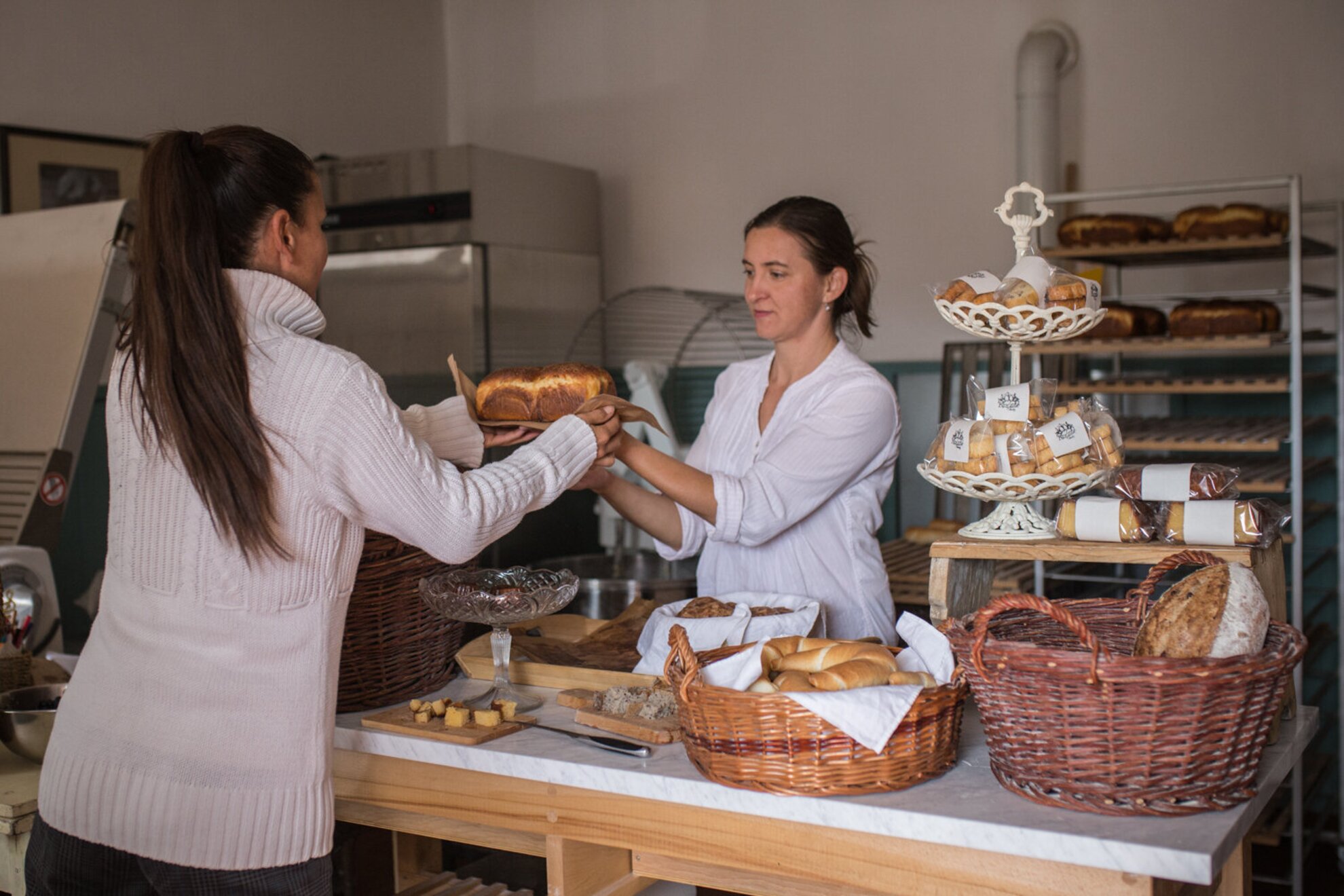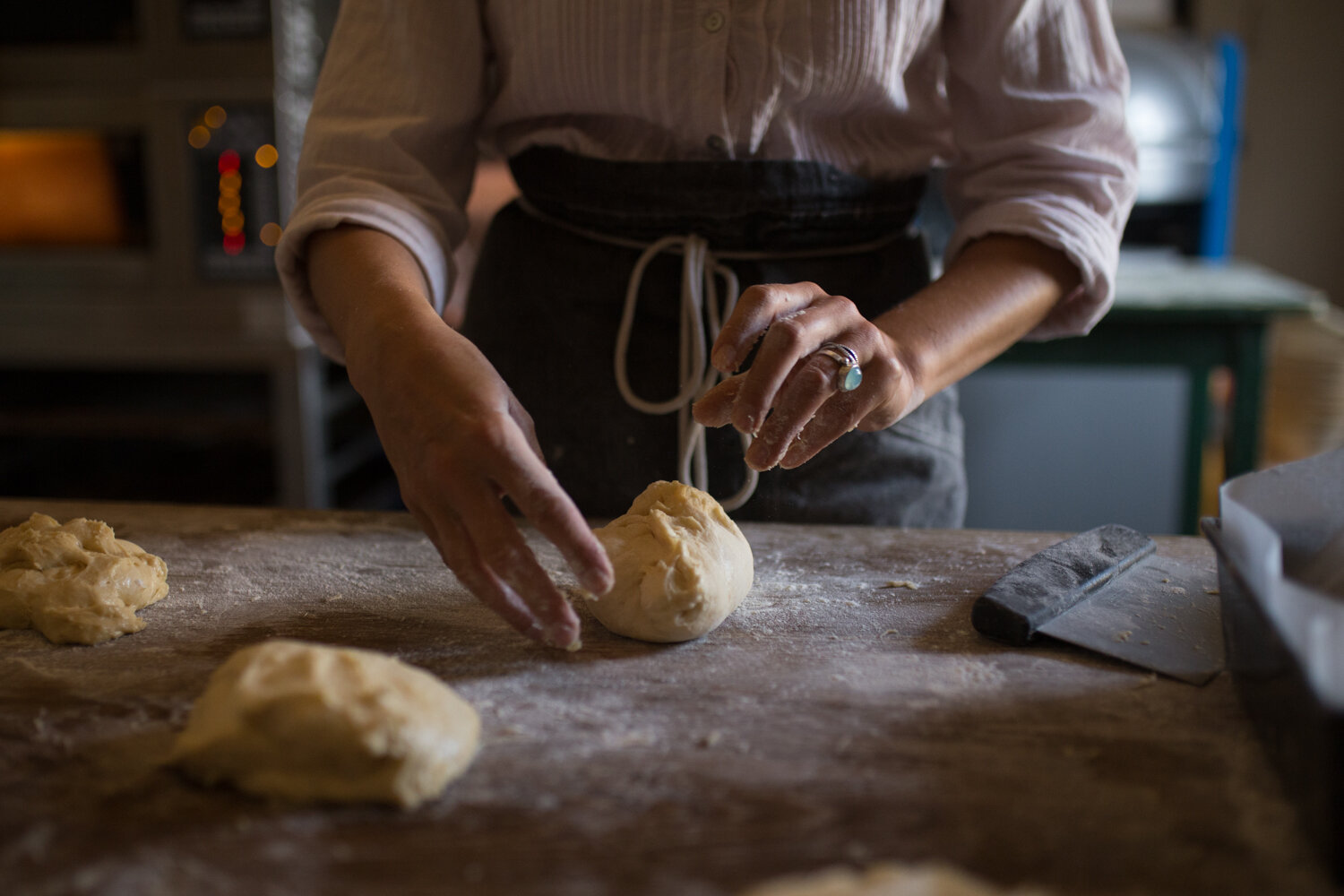Bea Kovács is now officially a baker. Besides getting them at the shop in Káptalantóti, the breads and pastries of Búzalelke Bakery are also available at the market of Káptalantóti, and at the very best restaurants of the area. We visited her after the rush of summer to observe a day of work starting from dawn well into the afternoon: we saw how brioche is made, how crescent rolls are folded, and now we also know what’s it like when there’s a last minute order of 120 buns.
The lights are calming and peaceful at 6am, but don’t let the sight deceive you – it isn’t a slow morning: the bakery is already hard at work. Bea and her colleague, Eszter, are focused on the dough. The work is fast paced from 6am to 10am, they don’t even have the time to stop for a minute. Then comes 10 o’clock with the well-deserved coffee – that’s when they first have the chance to take a short break.
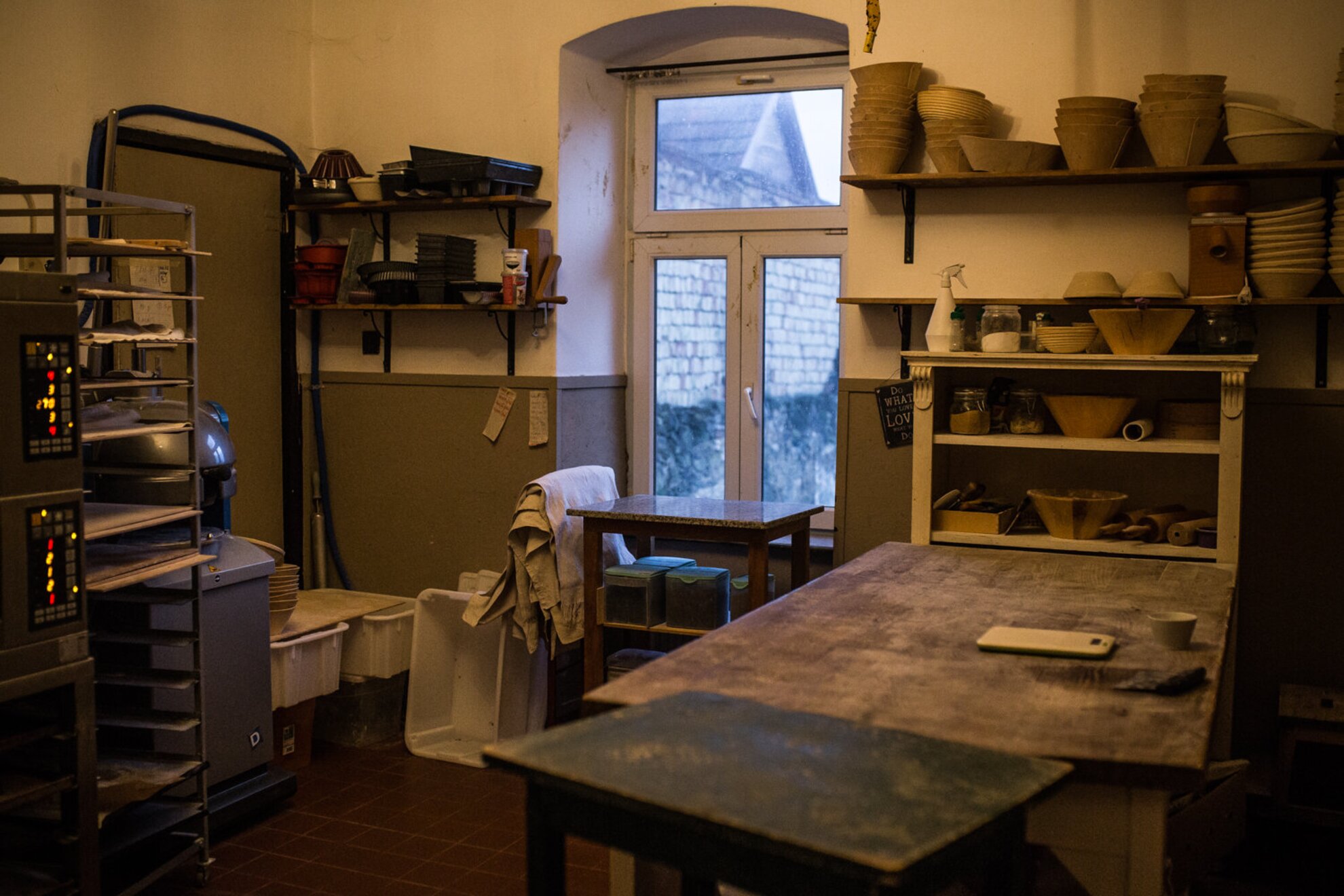
The breads are resting in the basket before they go into the oven. They look almost as if they were babies wrapped up in blankets as Eszter, Bea’s coworker pushes them out to the oven.
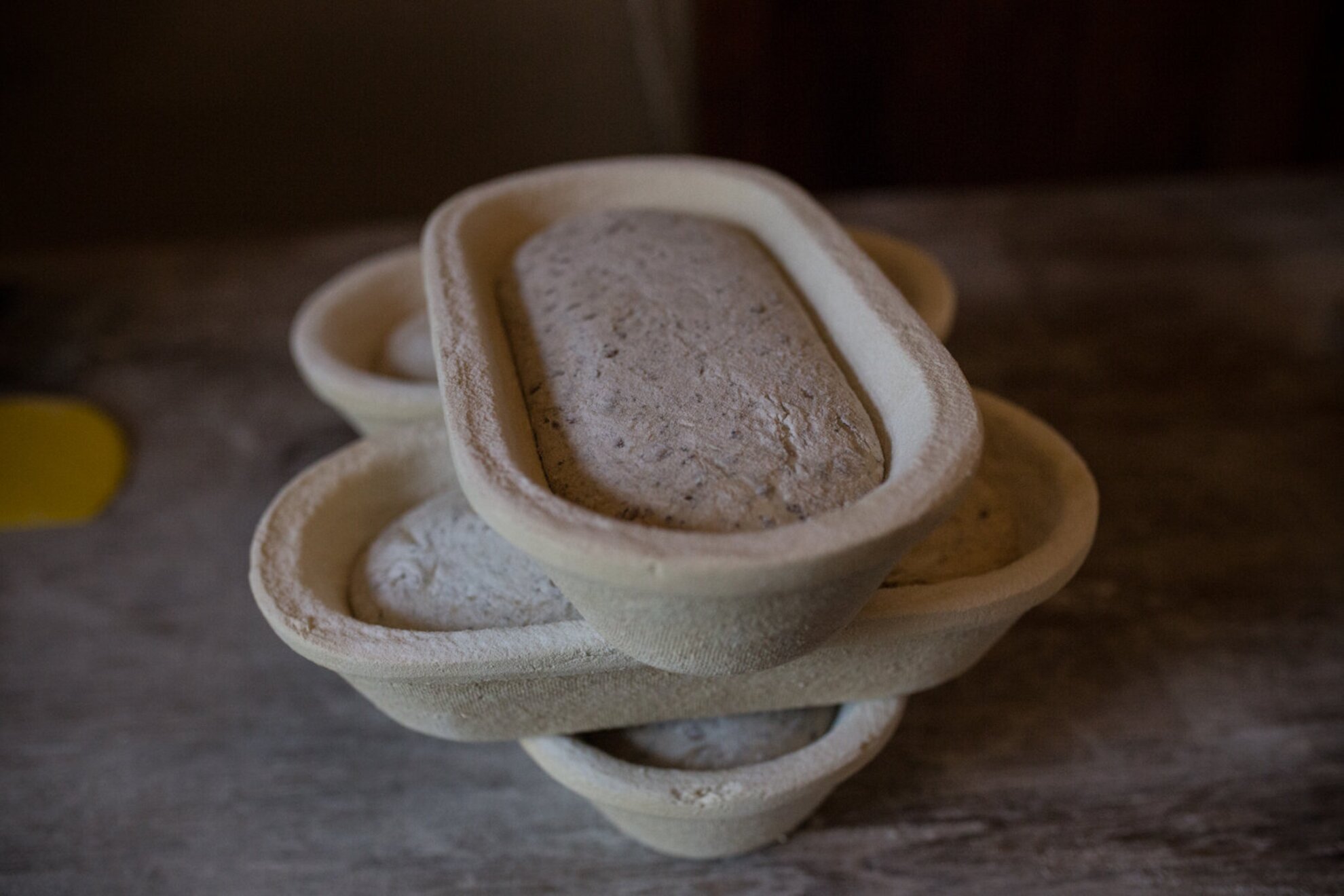
Bea makes cuts on the dough with a sharp blade. The incisions will rise while in the oven and shape a crop on the top of the bread. Even after thousands of cuts, it’s still a mystery why will the pattern look prettier on certain breads than on others.
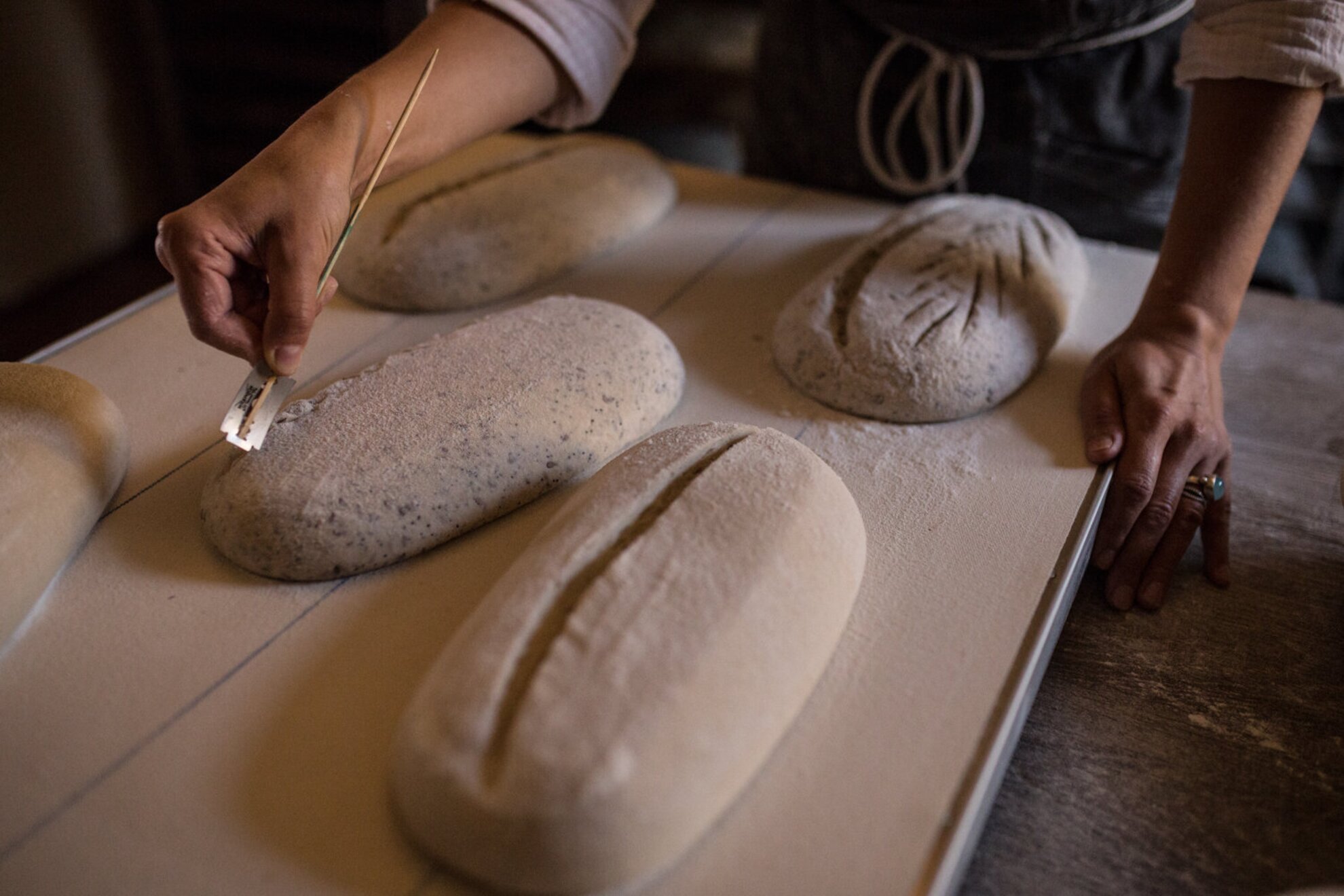
Eszter has been working with Bea for one and a half years; Adrienn joined this summer and hopes to stay. She measures the dough, while Bea and Eszter shape it. The two chubby dough-balls baked together make a brioche.
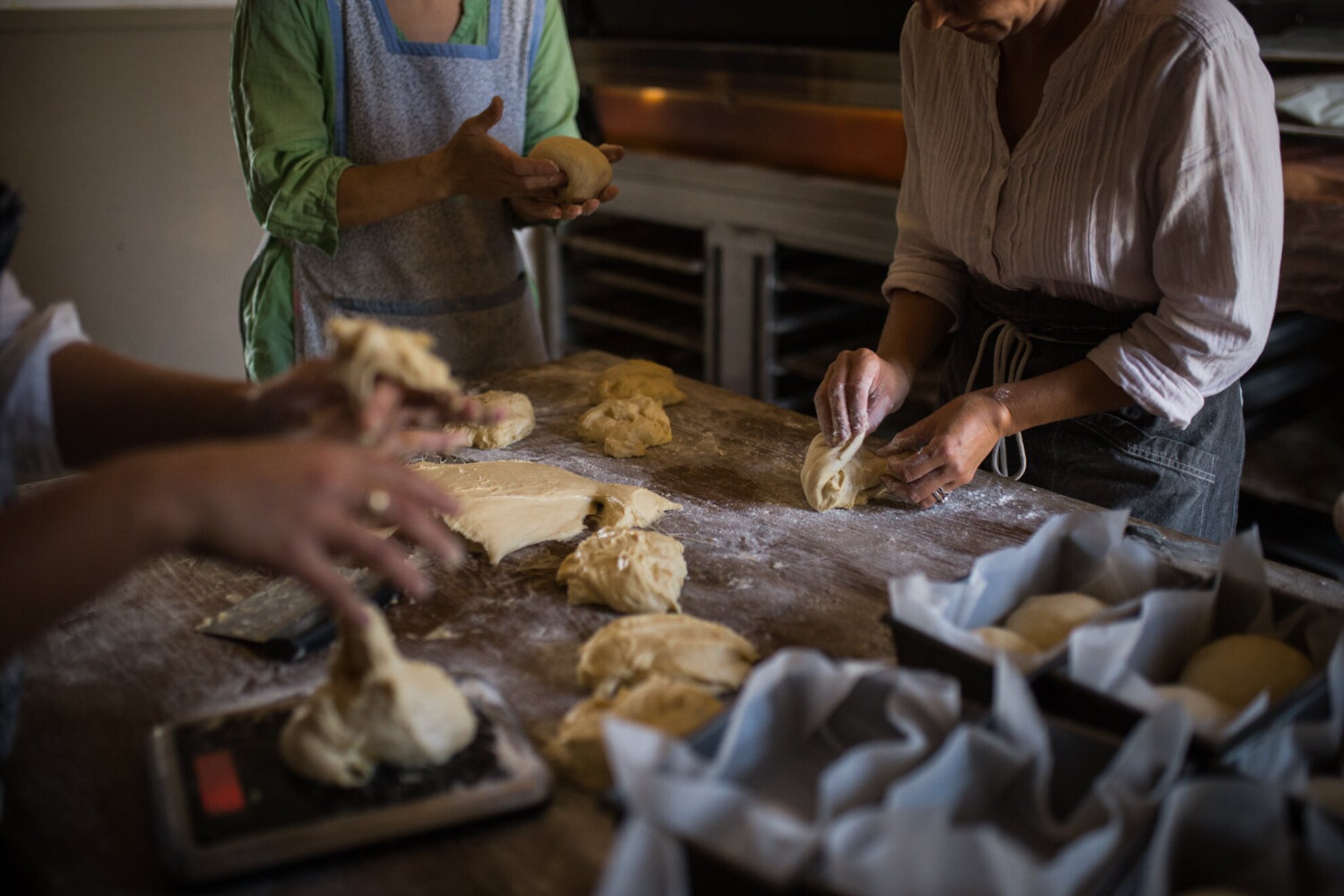
The brioche-dough, that has a lot of eggs and butter in it, is smooth, shiny, and creamy. “I love it,” says Bea, and you can see it in the way she handles it. The dough softly bounces like a ball under her hands. “That’s a good gluten-structure for you,” comes the scientific explanation of the dough’s playful manner.
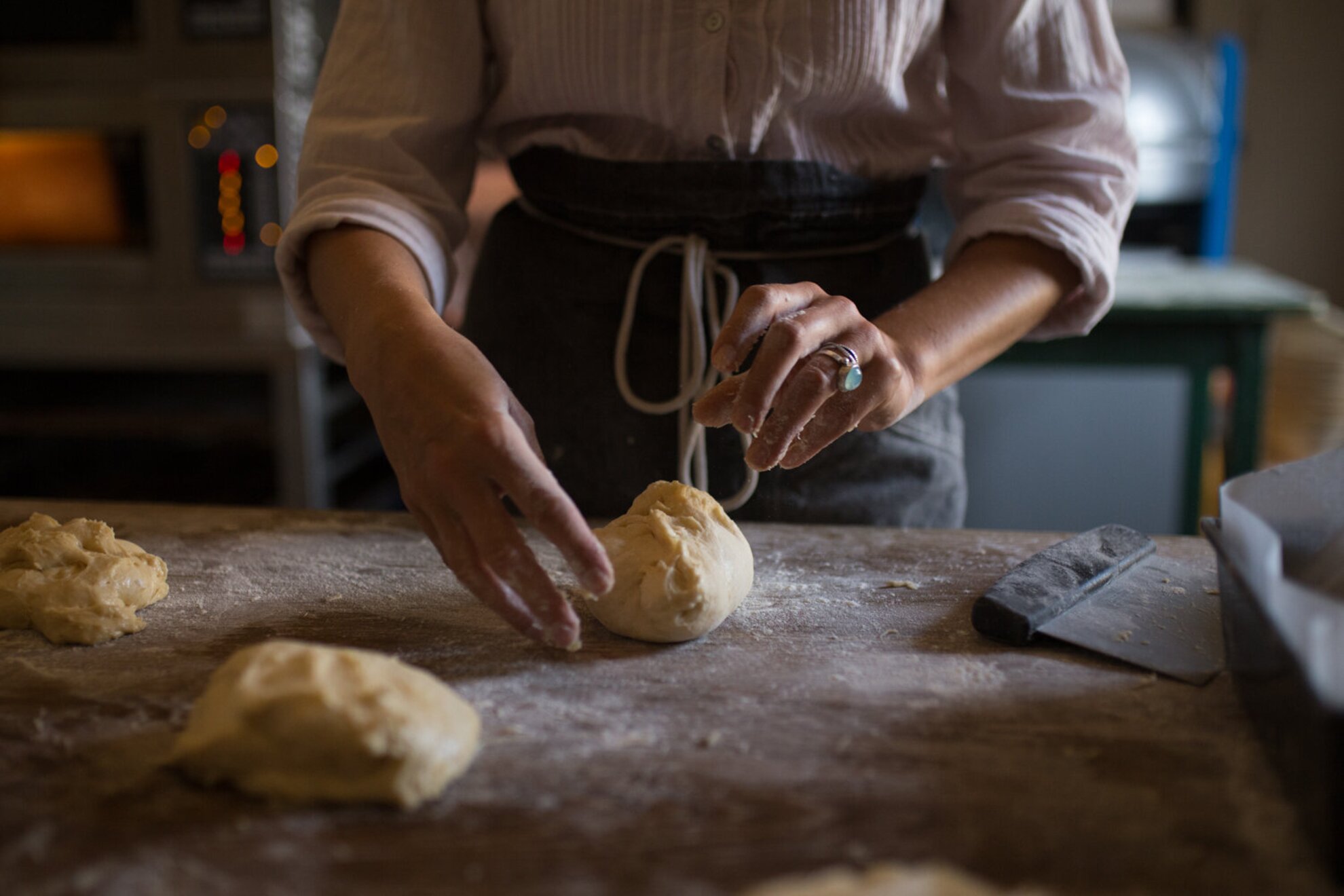
Burns, and the scars they leave are part of becoming a baker – they stay on the lower arm as reminders of a rite of passage. Even the outer edge of the oven door burns, and it’s easy to run into the hot baking sheet during the summer rush when there're multiple people working in a small space. The bakery used to be the pub of the village. Now it has a joyful turquoise wall with photographs of kids and personal messages here and there, while on the shelves we can see the peach chutneys of this past summer.
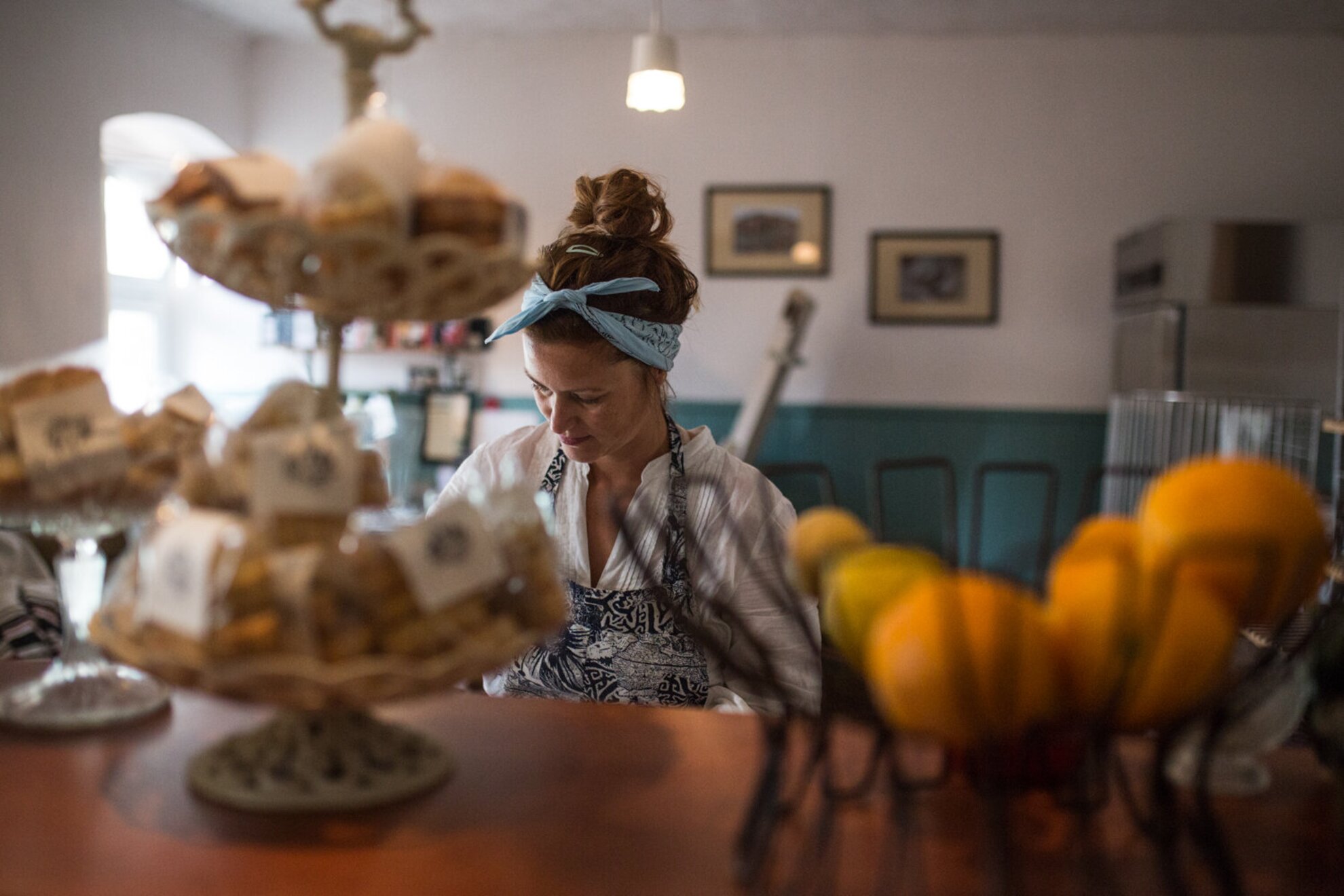
So far they only made kiflis (crescent rolls) three times, but it would have been hard to guess that based on their perfect shapes. We learned that it’s best to roll the crescents on a marble surface. Adri, Bea, and Eszter all shape the rolls, then they line them up on the baking sheet. They recognize their own work after the pastries were baked – well, at least they think they do.
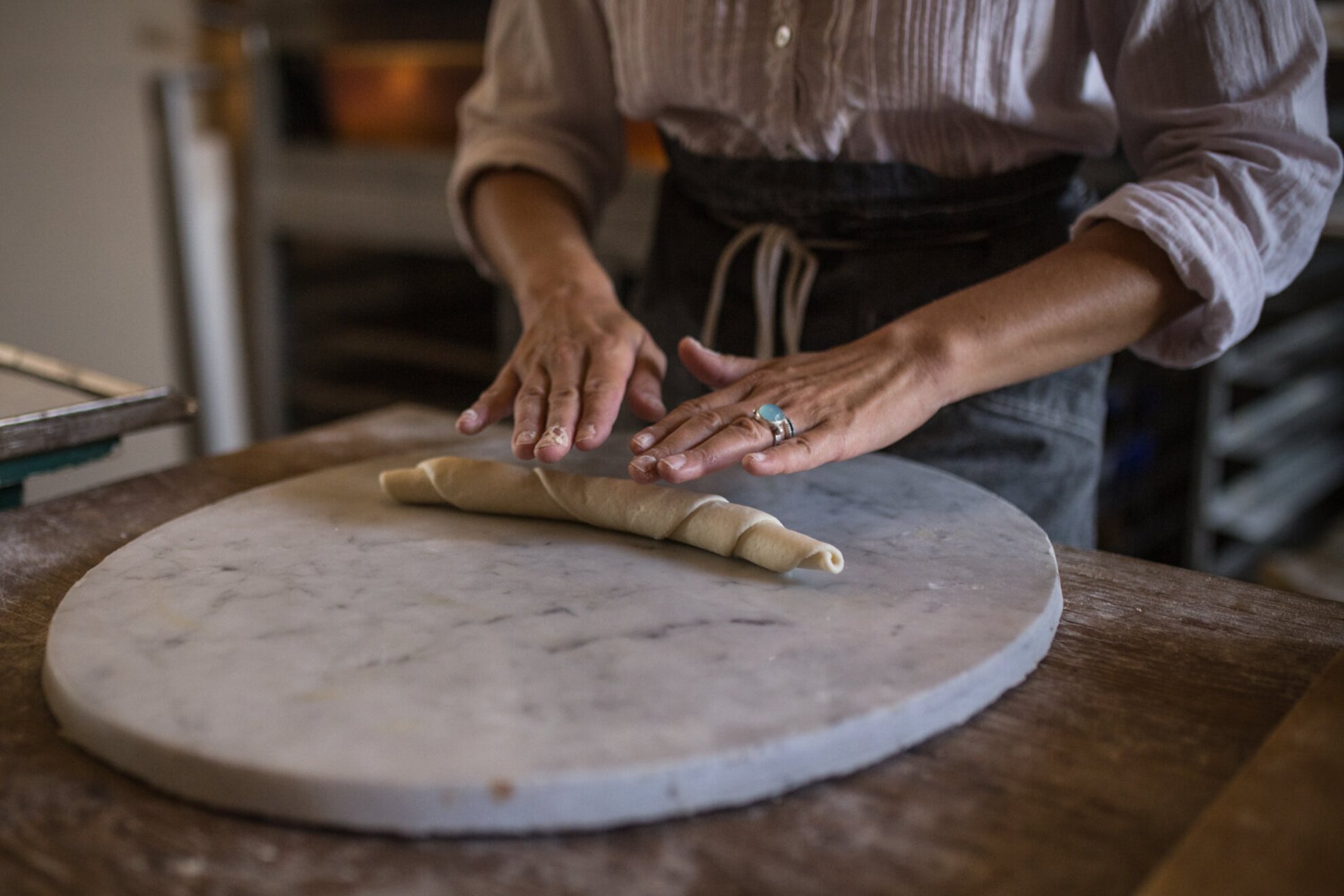
A little research. Bea is experimenting with the French pastry, gougère. The dough has cheese, cocoa, and thyme, and the result is a light, soft bun that would be the perfect snack on a wine tasting.
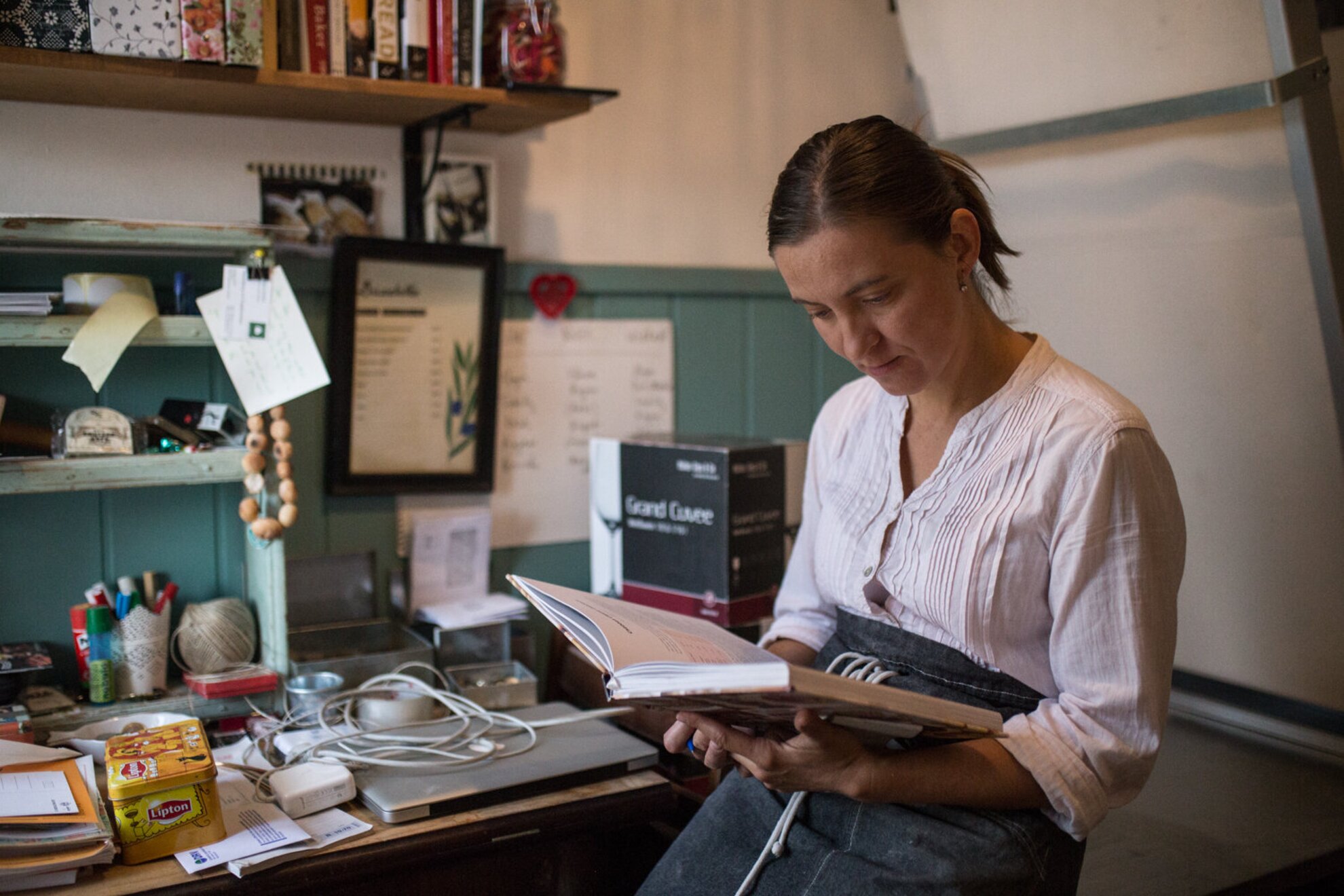
Bea writes down what worked and what should be fine-tuned after each experiment and try. She went to baker-training, but since everything was about yeast and additives there, and they had to follow the recipes, she decided to drop it after the first class, and she only went to take the exams.
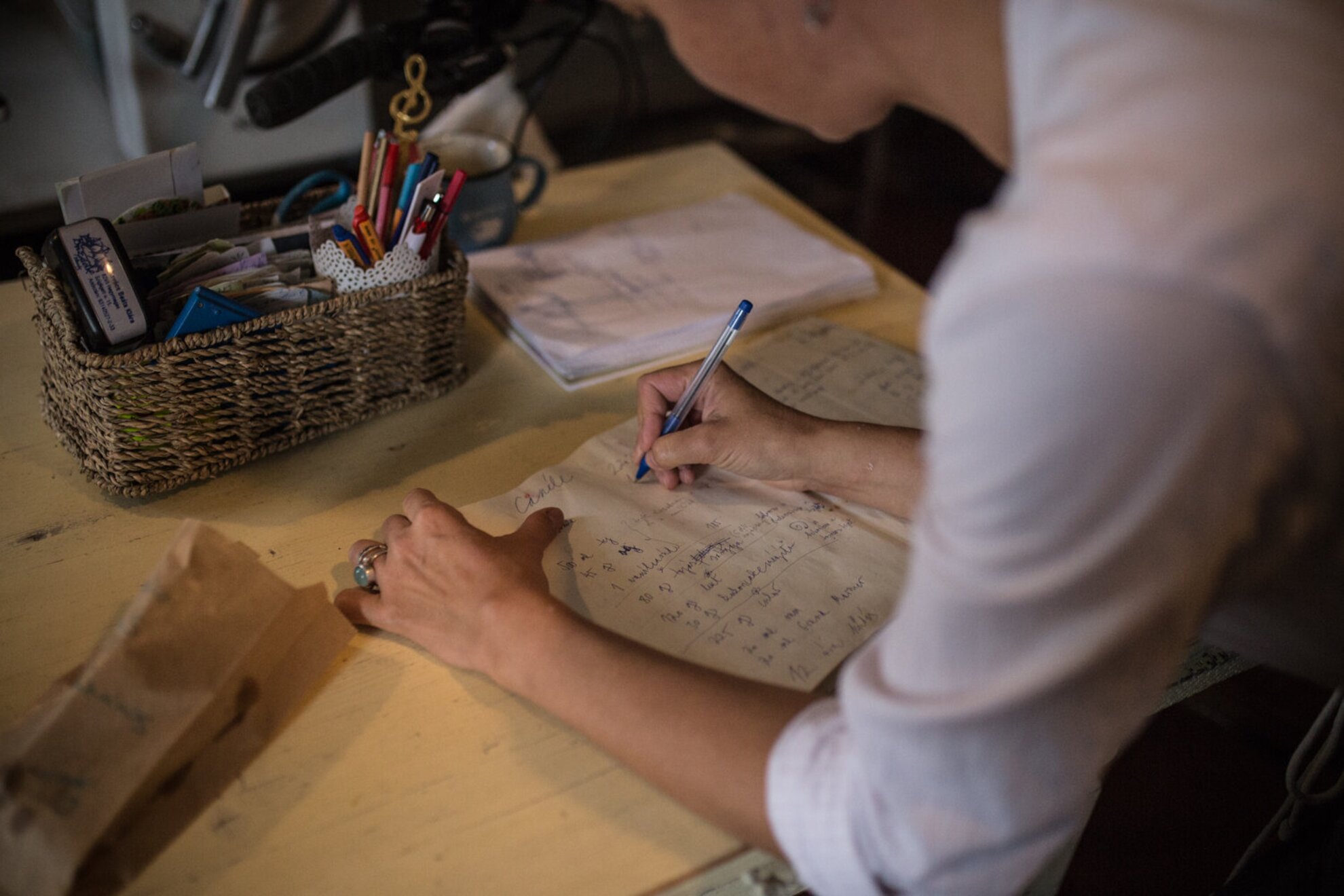
They received an order from Badacsony’s Kishableány restaurant that afternoon. They needed 120 buns before ending the season. This was almost nothing compared to the six hundred they baked every day during the height of summer – and even that wasn’t enough.
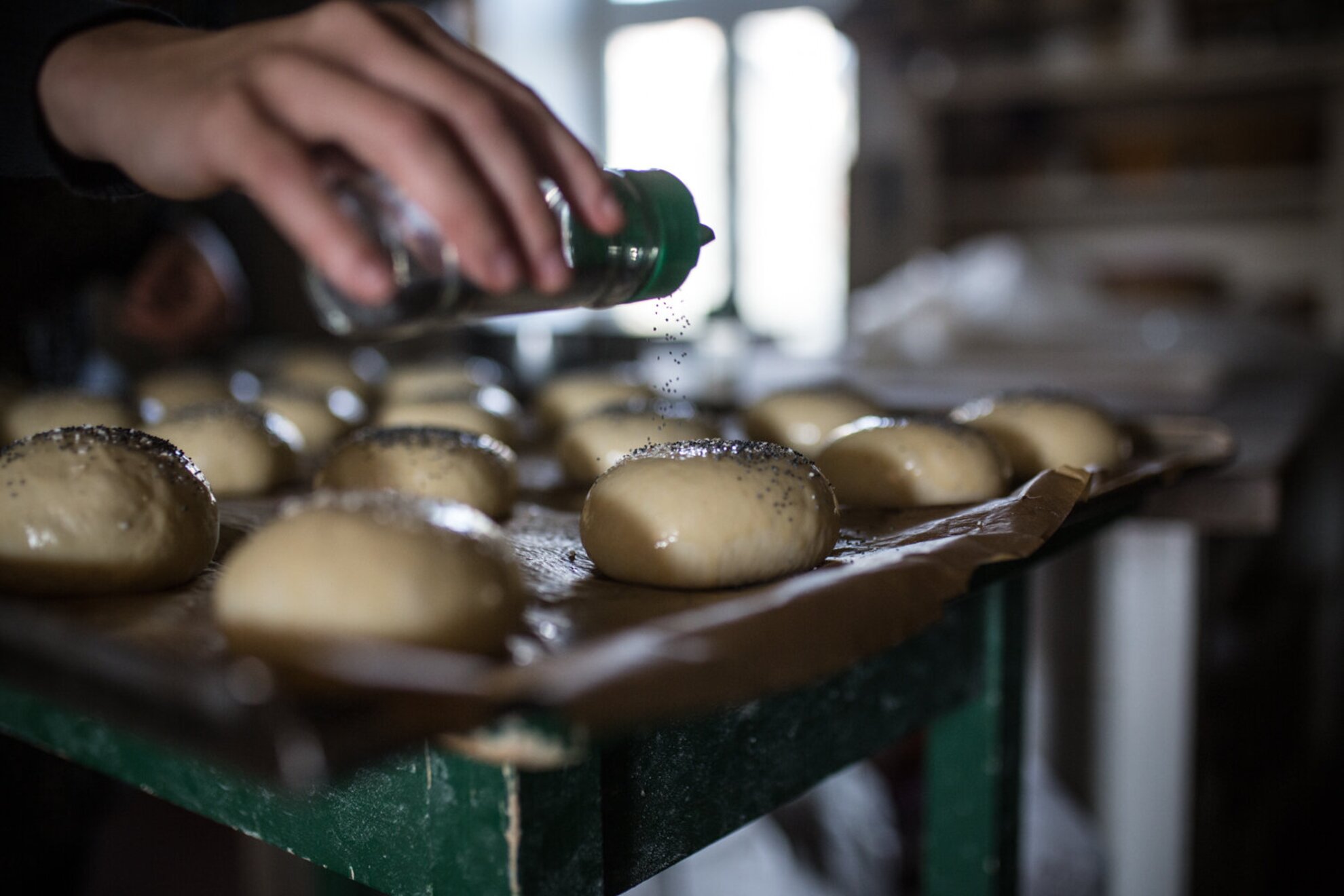
„Wow, how exciting!” exclaims Bea enthusiastically when she checks on the caneles sizzling in the oven. This is the first time she makes these: the French pastry, which contains a lot of milk, butter, eggs, sugar, and vanilla, is caramelized on the outside, while inside it’s soft just like a crème brűlée.
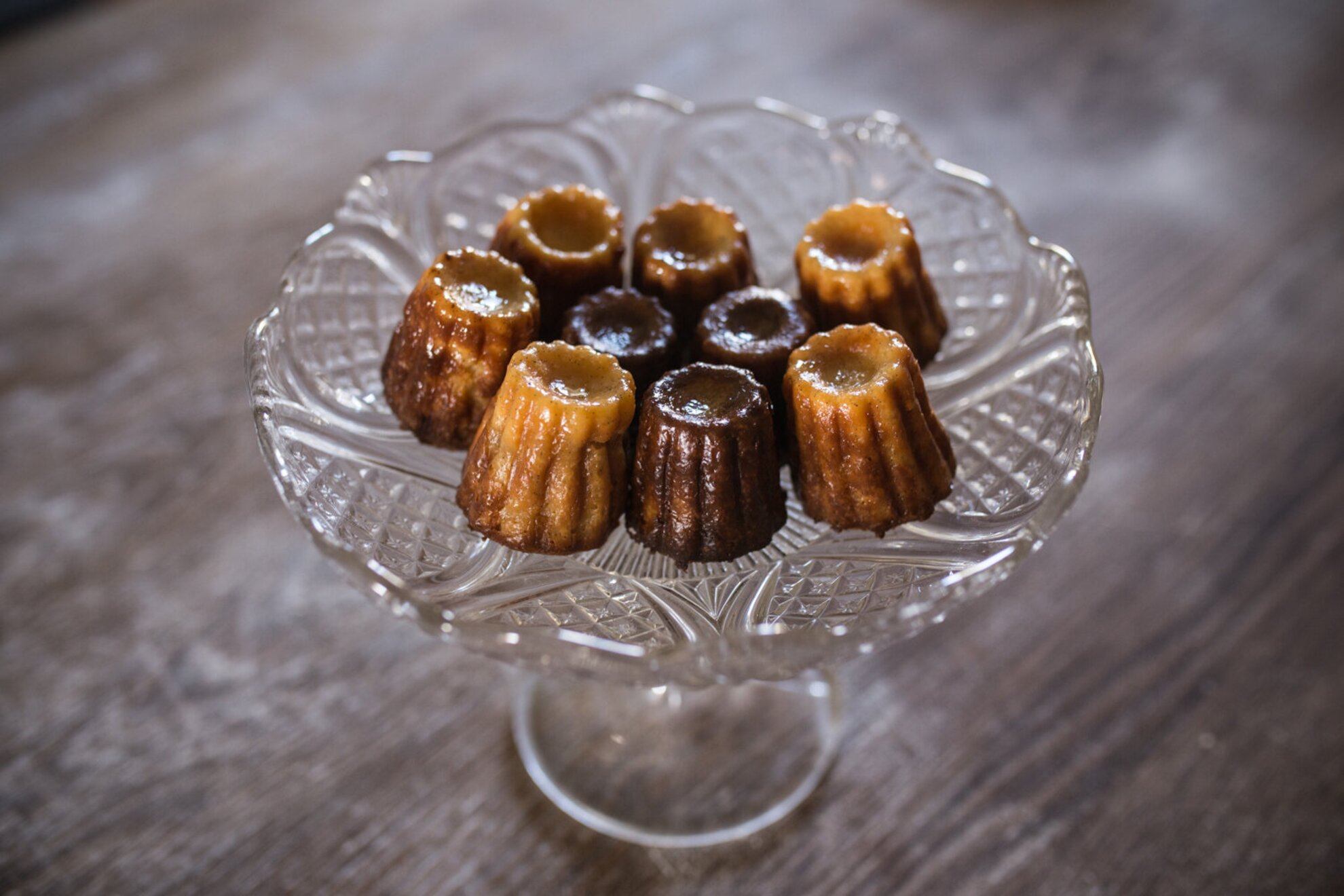
The first time she made bread with sourdough was in 2012. She baked regularly before that, but she used yeast for those loaves. The pictures of the first breads are still on the wall.
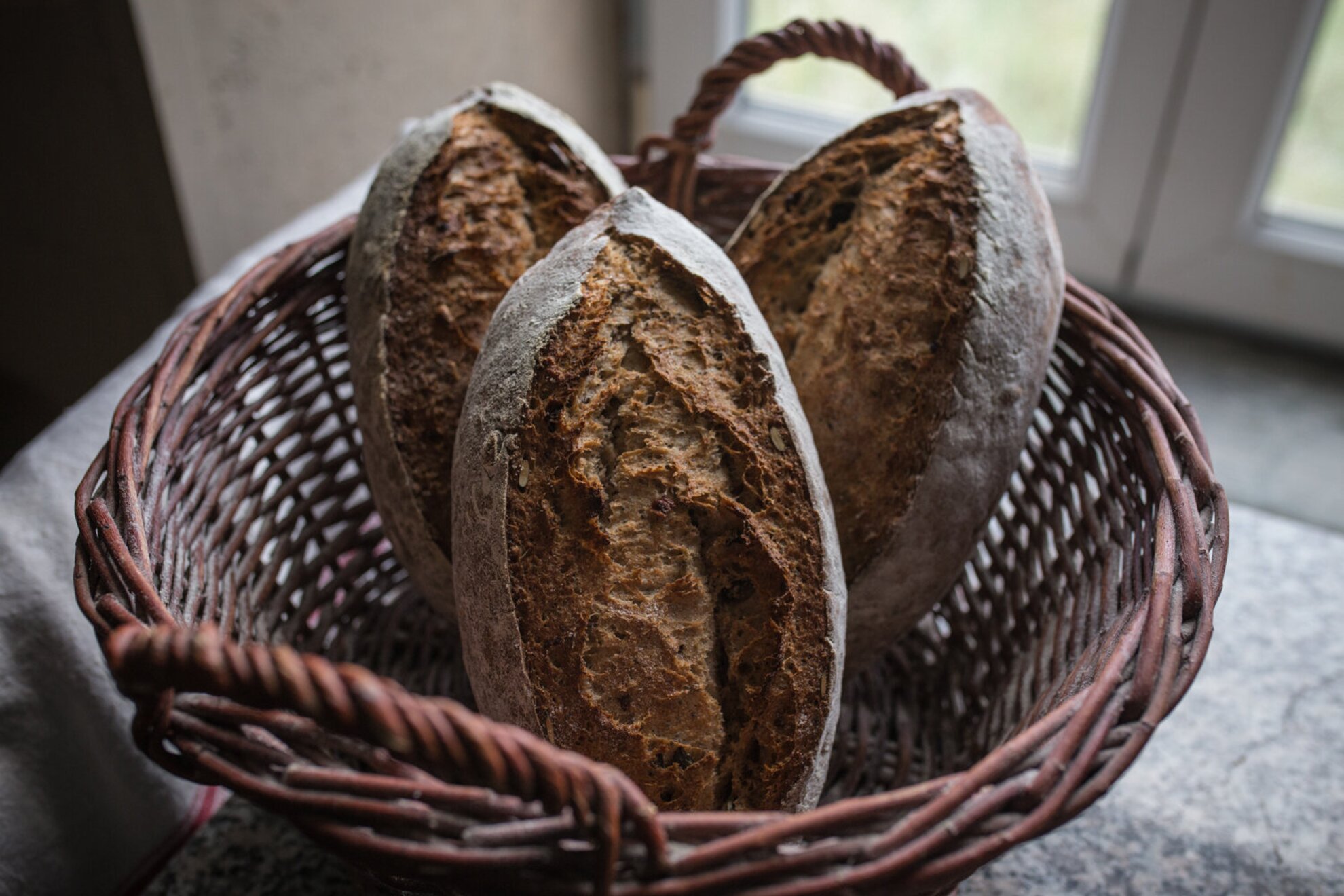
The first costumer comes in shortly after they open at noon. Besides the bakery in Kisapáti, Bea also sells her products at the market of Káptalantóti on Sundays. She constantly has orders, summer is the high-season for her as well, but last year she was working even on December 24. She plans to open a small café on Szent György-hegy at some point in the future.
